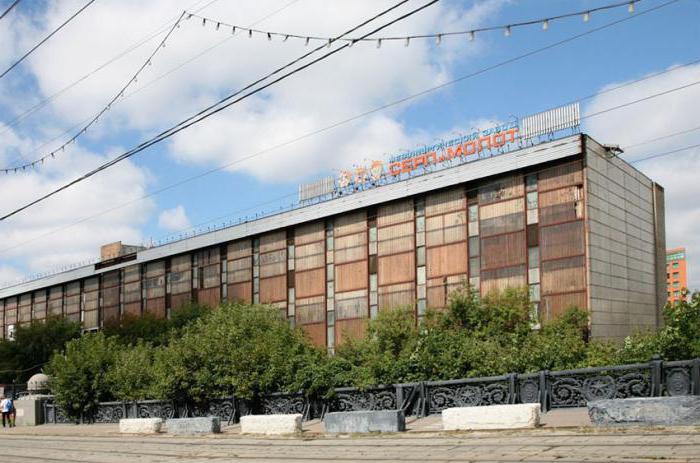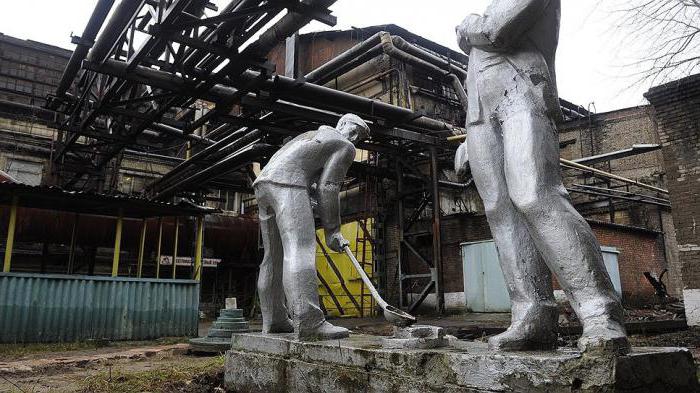OJSC MMZ Hammer and Sickle is a plant in Moscow, one of the oldest in the capital. The metallurgical industry specialized in the casting of high-quality steel of a wide assortment, the manufacture of sheet metal, wire, ribbons, and gauge steel.
At the moment, the company is bankrupt, production facilities are suspended. Part of the equipment was moved to Yartsevo. According to the urban development plan, residential quarters will grow on the site of the workshops.

Creature
Hammer and Sickle Plant in Moscow was founded by the efforts of the French industrialist Julius Goujon. In 1883, near the Rogozh outpost, construction of the Moscow Metal Plant began. After 7 years, the first pound of steel was already smelted in the open-hearth furnace.
By 1913, the Hammer and Sickle factory in Moscow became a large enterprise. Seven open-hearth furnaces made it possible to melt 90,000 tons of steel annually. The basis of the product was simple, essential household items: bolts, nuts, nails, wire, roofing iron.

Age of Change
Revolutionary events adversely affected the enterprise. Although the active hostilities of the Civil War did not affect Moscow, MMZ reduced production by 50 times. Only in 1928 the team managed to achieve the economic indicators of 1913.
In 1922, the plant was renamed "Hammer and Sickle" - the event was timed to coincide with the anniversary of the October Revolution and was held in a festive atmosphere on November 7.
In 1931, a large-scale reconstruction began at the plant. Old equipment has been replaced by modern and high-performance. There were units for pickling and heat treatment of products, drawing mills, electric furnaces. The quality of steel produced has improved markedly. The foundation of the workshops that became the “locomotive” of the enterprise dates back to this time:
- tape rolling;
- gauge;
- shaped and foundry.
For the first time in the USSR, production of the thinnest stainless tapes with a thickness of only 0.1 mm was mastered. For labor zeal, the factory workers were awarded in 1939 an honorary award from the government - the Order of Lenin.
During the Great Patriotic War, the Hammer and Sickle Plant in Moscow did not stop working. Its products were extremely important for the defense industry. In addition to steels and traditional products, elements of weapons and ammunition were produced in the workshops. For its merits, the enterprise was awarded the Order of the Red Banner of Labor.

Post-war development
The working group, consisting of enterprise specialists and scientists, developed in 1949 a revolutionary technology for the intensification of production with the forced supply of oxygen into the openings of the open-hearth furnace. Developers of a promising casting method were awarded the Stalin Prize. Subsequently, this method was introduced by many metallurgical plants.
In the 50s, the Hammer and Sickle factory in Moscow became a testing ground for testing and introducing new technologies. In particular, factory workers managed to significantly reduce the time of metal smelting, while increasing the open time of open-hearth furnaces between overhauls. Here, for the first time, waste heat boilers, special cooling and evaporation elements, and an automatic control system were introduced. The work of open-hearth furnaces was transferred from fuel oil to gas fuel.
In 1963, part of the open-hearth furnaces was replaced by electric-melting equipment, which made it possible to improve the environmental situation in the capital and improve the quality of steel. Electroslag remelting apparatuses were purchased and installed in the USA.
In 1978, MMZ created an innovative remelting technology according to the so-called four-strand scheme.In subsequent years, many developments were introduced, for which the team in 1983 was awarded the Order of the October Revolution. In the name of the enterprise, in honor of its centenary, one of the streets in Moscow was named - the passage of the Hammer and Sickle Plant.

The breath of time
The 90s were critical for the metals industry. "Hammer and Sickle" at times reduced production volumes. In addition, the vast territory of the enterprise, many of whose shops were dilapidated, was a tidbit for developers. In the 2000s, plans to reduce the plant appeared. A part of the equipment (in particular, a high-performance long-section rolling mill) was relocated to a metallurgical plant in Yartsevo, but a number of workshops continued to melt steel.
In 2007, the calibration workshop stopped work. After 2 years - steel wire and section rolling. Today the enterprise is in a deplorable state - work has begun on the demolition of structures and clearing the territory. At this place it is planned to erect a housing estate. Address of the Hammer and Sickle Plant: Moscow, 111033, ul. Zolotorozhsky Val, d.11.